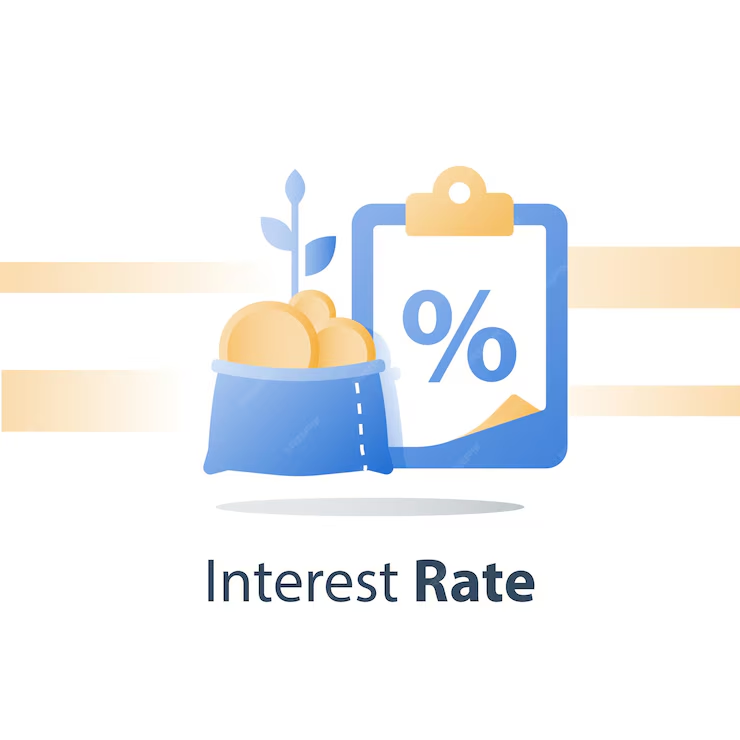If you are reading this article, you are someone bearing the pain of high interest rates on a personal loan you may have taken to meet your instant needs. You probably didn’t have the time to compare and shop for the best personal loan interest rates as the focus was to grab instant cash. Whatever the reason may have been, you have the opportunity to reduce your personal loan interest rate. We will highlight how you can do it successfully. Let’s begin!

How Do Personal Interest Rates Impact Your Repayment Journey?
A personal loan is an unsecured loan both salaried and self-employed get from banks and non-banking financial companies (NBFCs) at interest rates ranging from 12-25% per annum on average. The interest rates play a crucial role in determining the personal loan EMIs. The higher the interest rates, the higher the EMIs and vice versa. Using the personal loan EMI calculator can help you understand the same. The calculator computes the EMI based on the loan amount, interest rate and tenure.
Consider Using the Personal Loan Balance Transfer Option
The best way to reduce your interest payments is using the personal loan balance transfer at lower rates. It’s a process by which you can transfer your outstanding loan balance to another bank or NBFC at lower rates. So, if you grab a personal loan balance transfer option at an interest rate lower than your running one by 4-5%, it will greatly reduce your interest outgo. Also important is the time at which you do a balance transfer. It’s advisable to opt for a balance transfer when the loan has run for less than half of its repayment tenure.
How Does the Balance Transfer at Lower Personal Loan Interest Rates Work?
It’s an arrangement wherein you accept the proposal of a balance transfer from a new lender at lower personal loan interest rates. The new lender asks you to obtain a No Objection Certificate (NOC) from the existing lender regarding a balance transfer. Besides, you need to submit the loan statement to the new lender showing your repayment journey with the existing lender. Once the new lender approves and has your consent to the same, it will contact your existing lender to transfer your outstanding balance to it. There will be a small balance transfer fee attached to it. You need to pay this personal loan charge to get the deal executed successfully.
An Illustration Showing the Savings on a Personal Loan Balance Transfer
Example – You have taken a 5-year personal loan of INR 5 lakh at an interest rate of 18% per annum. It’s been two years of servicing this loan. Now you have come across a balance transfer from another lender at 14% per annum. How much do you stand to benefit from this transaction if the balance transfer fee is 1% of the outstanding loan balance plus 18% GST? Let’s find out!
| Aspects | Amount (In INR) |
| EMI on an Existing Personal Loan | 12,697 |
| Total Interest Payable | 2,61,803 |
| Interest Paid So Far | 1,55,921 |
| Outstanding Balance After 2 Years | 3,51,800 |
| EMI on a Balance Transfer | 12,024 |
| Interest Payable for the Next 3 Years | 81,053 |
| Interest Paid So Far + Interest Payable for the Next 3 Years | 2,36,974 |
| Balance Transfer Fee | 4,151.24 |
| Savings (Interest Payable Over an Existing Loan + Balance Transfer Fee – (Interest Paid+Interest Payable on a Balance Transfer) | 20,677.76 (2,61,803 + 4,151.24-2,36,974) |
Eligibility Criteria for a Balance Transfer at Lower Personal Loan Interest Rates
Lenders typically allow a balance transfer at lower personal loan interest rates to individuals with a credit score of above 750 and a solid repayment history.
Consider Using Your Lump Sum Savings to Prepay Your Personal Loan Fully or Partially
There’s always a possibility of lump sum savings, especially when you get a massive hike on appraisal or joining. You can also have fixed deposits or mutual funds that you can liquidate to ease personal loan interest payments. The best part is that you can pay off your running personal loan either fully or partially and save on your interest outgo. Banks levy prepayment charges on a personal loan. However, the overall savings realised from this move outweighs the same. Let’s check out the illustration below to understand the same.
Example – You have a 5-year personal loan of INR 5 lakh at 18% per annum.
After 2 years, your outstanding loan balance is reduced to INR 3,51,800. You have paid interest of INR 1,55,921 out of the total payable i.e. 2,61,803.
Now, you have a lump sum savings of INR 2 lakh.
You decide to part pay INR 1 lakh. The bank charges 3% of the part payment amount plus 18% GST. This way, the part payment charges amount to INR 3,540.
The outstanding balance after part payment falls to INR 2,51,800. With this, your EMI and interest liability come out as INR 9,103 and INR 75,914, respectively. Adding interest already paid to the one after part payment and part payment charges, the sum becomes INR 2,35,375. You thus generate an overall savings of INR 26,428 (2,61,803-2,35,375).
Conclusion
As a borrower, you don’t need to continue bearing the pain of higher personal loan interest rates. Using any of the aforementioned options can help you enjoy your personal loan journey with enhanced savings that further empower you to meet your other financial goals. That’s all we have on this interesting topic. Keep following us to gain valuable insights into matters concerning your money, health, beauty and so many other things.






